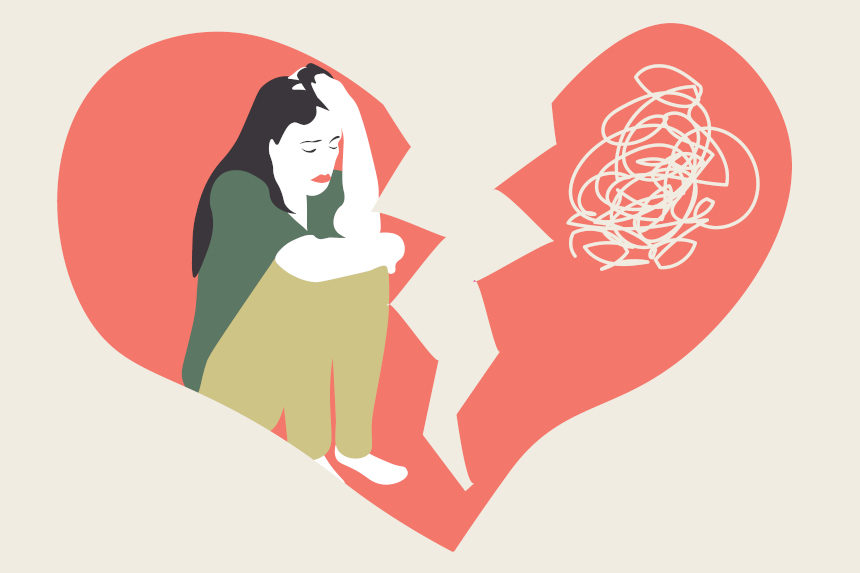“Your Health Checkup” is our online column by Dr. Douglas Zipes, an internationally acclaimed cardiologist, professor, author, inventor, and authority on pacing and electrophysiology. Dr. Zipes is also a contributor to The Saturday Evening Post print magazine. Subscribe to receive thoughtful articles, new fiction, health and wellness advice, and gems from our archive.
Order Dr. Zipes’ books, Ari’s Spoon, a new novel, as well as Bear’s Promise and Damn the Naysayers, A Doctor’s Memoir. Check out his website at dougzipes.com.
In the opening scene of my latest novel, Ari’s Spoon, I describe the hero and heroine in the operating room learning how to repair broken hearts. Of course, hearts don’t break in the literal fashion, but do need surgical repair for a variety of problems.
However, the “broken heart syndrome” has captivated recent public interest. It refers to a stress-induced abnormality of the heart muscle wall, in medical terms called “takotsubo cardiomyopathy.” The medical name comes from the Japanese word “takotsubo” meaning “octopus trap” because when affected by this condition, the main pumping chamber of the heart, the left ventricle, takes the shape of an octopus trap: a narrow neck and potbellied bottom resembling the octopus pot used by Japanese fishermen to capture a favorite seafood delicacy.
Symptoms resemble those caused by the usual heart attack, including chest pain, palpitations, sweating, shortness of breath, dizziness, or fainting. Unlike a heart attack, blockage in the arteries supplying the heart with blood are not the cause. Rather, it appears that the culprit is inflammation and an excessive release of adrenalin triggered by an emotional or physical event of severe stress, such as a car accident or loss of a loved one — obvious examples of the brain impacting the heart. Other triggers, often enhanced during the COVID pandemic, include the stress of public speaking, loss of money gambled at a casino, fierce arguments, asthma attacks, or even happy occasions such as a surprise party. In almost a quarter of cases no definitive explanation is present.
Of interest is that the broken heart syndrome, while still not common, is increasing in frequency in both men and women, but especially in middle-aged and older women. It may be underdiagnosed, as it accounts for 10 percent of apparent heart attacks in women. In a recent publication, the authors analyzed inpatient data collected from more than 135,000 men and women diagnosed with the condition and found that more than 88 percent of all cases were women. During a period of 2006 to 2017, the broken heart syndrome increased at least 6 to 10 times more rapidly for women in the 50-to-74 age category than in any other group. Why women in particular, and in this age range, appear to be more susceptible remains unexplained. But it reinforces the fact that heart disease is an important cause of disability and death in women.
Although sudden death has been documented, fortunately the outcome is not usually fatal. While it was once thought that most patients recovered in a week or two with just supportive treatment, it is now apparent that many experience prolonged impairment of quality of life due to compromised recovery of the heart’s ability to contract normally again. Stress reduction is an important part of long-term recovery and prevention of recurrences that can occur in 20 percent of women during the 10 years after the first attack.
Perhaps by reducing stress, marriage plays an important role in cardiovascular disease, such as the broken heart syndrome. Unmarried patients, including those who are divorced, separated, widowed, or never married, have an increased rate of adverse cardiovascular events when compared to their married counterparts; marriage may be even more protective for men than women. While the underlying mechanisms are not completely clear, it seems reasonable to assume that psychosocial and socioeconomic factors, as well as less stress, contribute to the benefits of a happy marriage and better CVD outcomes. A happy marriage literally and figuratively reduces the chances for having a broken heart.
Featured image: Shutterstock
Become a Saturday Evening Post member and enjoy unlimited access. Subscribe now




Comments
It was largely agreed within my family and I will always believe that my Memaw (grandmother) died of a broken heart. She was in her mid 80s when she passed in Apr 1979 exactly 13 months to the day after her lifelong spouse with whom she had been with since a teenager, my Paw Paw (grandfather) passed away in 1978 when in his late 80s. Everyone could see it. It was not hard to tell that Memaw was never the same after Paw Paw passed away. Those two truly lived for each other and honestly that’s the way it truly should be.